
Commentary
May 18, 2003
Murray Hill
.....
¶ Academics and researchers associate Murray Hill with the famous New Jersey-based Bell Labs (now ATT), home of many great inventions and interesting projects. But for typographers, Murray Hill is Emil J. Klumpp's script font developed in 1956 at Kingsley/ATF. New York-based Emil Klumpp (b. 1912) became type director at American Type Founders in 1964. It is hilarious that Linotype calls Emil Erich and that MyFonts filed his work under Emil Klump (one "p"). Anyway, the status of the Murray Hill typeface is unclear as the entire ATF collection has been donated to the Smithsonian in the early nineties. Many versions of Murray Hill have been published since then. What prompted me to write this page was a biting comment on a type forum regarding a small foundry's adaptation of Murray Hill. My question to that poster is: which of the versions below are legally or morally acceptable, in your eyes? And what is the error then, in the small foundry's attempt to make its own version?
The versions
¶
The (digital) versions of Murray Hill include:
The alphabet
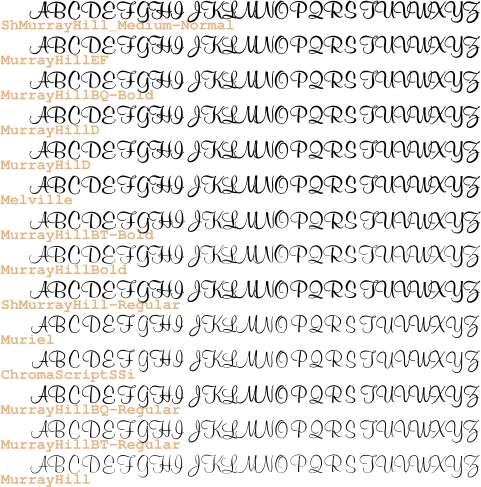
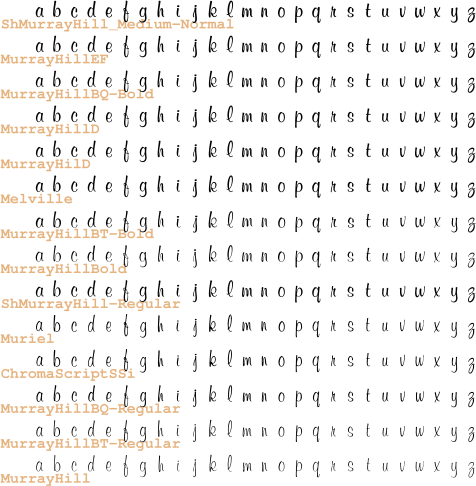
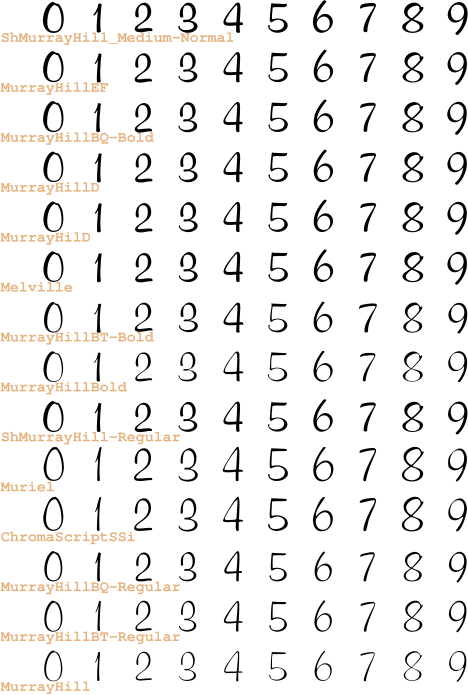
¶ Hard to make out which version to prefer in this list. I find the Image Club Graphics "Murray Hill" a bit thin (and on closer inspection, some outlines are imperfectly aligned). Its "Murray Hill Bold" has the greatest contrast, and that too causes some problems in execution.
¶ The lower case "o" splits the typefaces into ChromaScriptSSi and Muriel on the one hand, and everyone else. Upon closer scrutiny, ChromaScriptSSi and Muriel are fundamentally identical, with only cosmetic Bezier control point changes. ChromaScriptSSi is in fact grotesquely scarred (see "6") by incompetent control point manipulation.
¶ MurrayHillBQ-Regular suffers from a skin disease (check the lower case "a" or the top part of the "d"). This leaves SoftMaker, Bitstream, Elsner&Flake, URW and Mannesmann-Scangraphic in the competition. Now ask the question: what business did these companies have making and selling Murray Hill imitations? How many of them are supporting the heirs of Emil Klumpp?
Bezier outlines
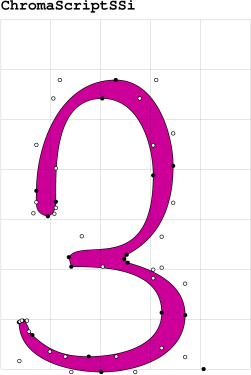
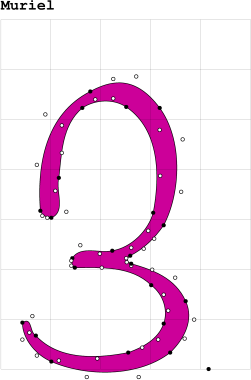
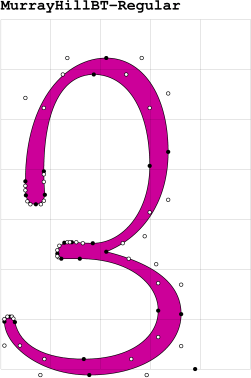
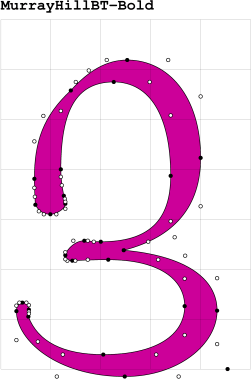
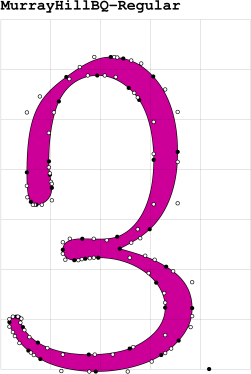
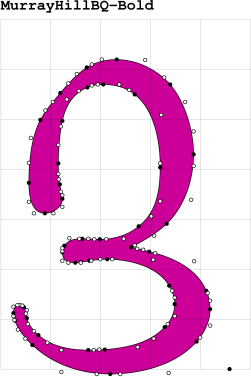
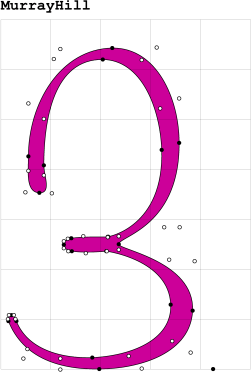
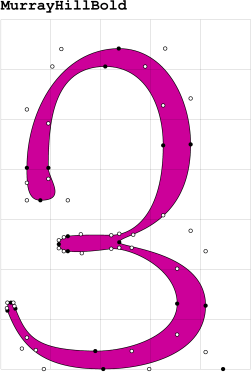
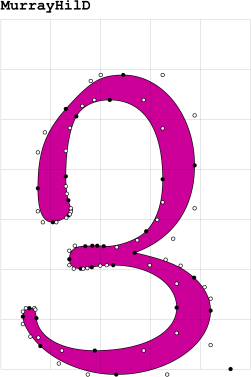
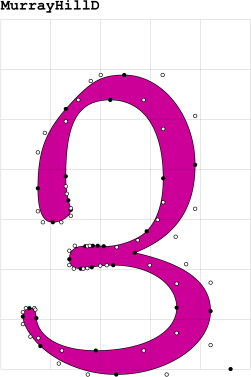
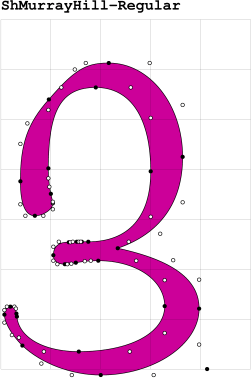
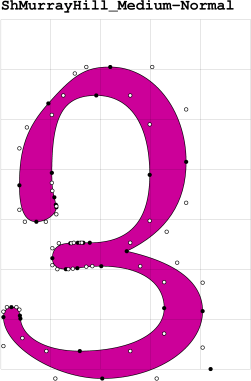
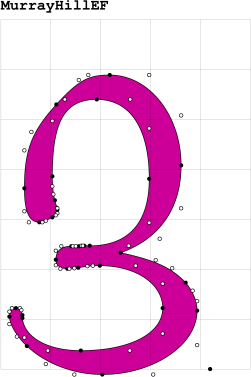
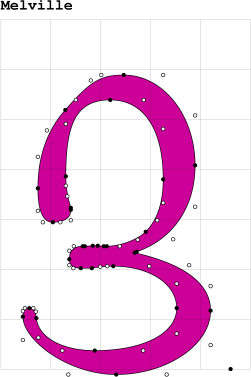
Copyright © 2003
Luc Devroye
School of Computer Science
McGill University
Montreal, Canada H3A 2K6
luc@cs.mcgill.ca
http://cg.scs.carleton.ca/~luc/index.html